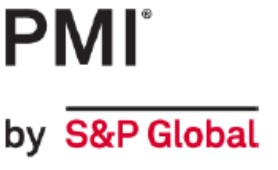As today is the first of the month, most of the Purchasing Managers’ Index (PMI) data for manufacturing is being released today; however, our publishing schedule means that we don’t yet have the data from the Americas and the figures for the ASEAN region won’t be released until Monday owing to a public holiday in Vietnam. Therefore, all of the commentary that mentions strongest and weakest readings exclude these countries/region.
The UK manufacturing PMI fell to 43.0, its lowest figure for 39 months, although this is not quite as bad as the flash estimate that we reported last week; indeed, if you exclude the Covid distortions in April and May 2020, this is the weakest reading since the middle of 2009 during the recovery from the global financial crisis. The rate of contraction in output was one of the fastest in the survey’s 26-year history and the rate of decline in new orders also accelerated compared to July. This trend was shared across the manufacturing sub-sectors of investment, consumer and intermediate goods although the latter was the weakest overall with the fastest rates of decline in most variables.
In the Euro-zone, the manufacturing PMI improved a little in line with the flash estimate but, at 43.5, it is still pointing to significant contraction in activity in the sector. As in the UK, output and orders fell at significant rates – although the pace of decline eased slightly for production, it accelerated in the case of new orders. The overall trend is calculated using surveys in 8 Euro-zone countries and most of them saw an improvement in their manufacturing PMI in August, although most remain firmly in negative territory. The exceptions to the overall level trend were Greece and Ireland which had PMI’s above the crucial 50 level (in the case of Ireland, it moved from negative to positive this month with the largest improvement among the countries we cover); in terms of the month-on-month movement, only Greece and Spain had a weaker reading than in July. Germany (39.1) has by far the lowest PMI in the Euro-zone (indeed, across the whole of this report) and this is affecting economies with close economic ties as we will see shortly.
The other EU countries with a PMI report all remain well below the threshold figure of 50; Czechia (42.9) and Hungary (46.5) improved their readings a little compared to July but the manufacturing PMI for Poland (43.1) and Sweden (45.8) slipped further into negative territory – the latter fell by 2.2 points which was the largest negative trend this month. These countries have close links to Germany with their manufacturing sectors affected by the weakness in their main market.
This also applies in Switzerland where, despite a modest improvement in the PMI which moved it above Germany this month, it remains very weak (39.9); Turkey (49.0) had a weaker reading than in July.
In Asia the trend was also generally for a modest improvement in the PMI while remaining in negative territory, although there was a small weakening for South Korea (48.9) and Japan was unchanged from its July reading (49.6). China saw a turnaround from the previous month with its reading of 51.0 reversing the dip below the threshold in July. Finally, India remains the “star performer” globally with its already strong manufacturing PMI improving to 58.6, all but back to the May figure which was, in turn, the highest since November 2021. We will update the report next week with the figures for the Americas and the ASEAN region next week but in the meantime, the individual S&P Global PMI reports can be downloaded from their web-site at https://www.pmi.spglobal.com/Public/Release/PressReleases; we also have a summary report in the form of a series of charts which is available to download below (this will also be updated next week). You should note that the PMI readings for Hungary, Sweden and Switzerland are not compiled by S&P Global but can be found with an appropriate internet search (it also means that they are not part of the global PMI calculation).

